Cockroaches rank among the most despised and irritating household pests. With nearly 4,600 known species, over 30 are notorious for infesting homes. They predominantly occupy warm, damp environments, making kitchens, pantries, and bathrooms their prime targets. Often found lurking near food and moisture sources, these unwelcome guests can be a persistent nuisance.
Cockroaches thrive in unsanitary conditions and pose a significant health risk, potentially carrying bacteria and viruses into your living spaces. A common concern for homeowners is understanding how these pests infiltrate their homes—do they fly or crawl? In this article, we delve into the cockroaches’ modes of entry and how to keep them at bay.
Can Cockroaches Fly? While not all cockroaches are skilled fliers, those possessing wings, like the American and Australian varieties, can use them for short distances or gliding. In contrast, the German cockroach, despite having wings, isn’t a strong flier. These insects typically rely on their swift crawling skills for mobility, but when threatened, they may take to the air for a brief escape, adding to their unsettling presence in our homes.
In the following section, we have listed the types of flying cockroaches and what attracts them to your house. Additionally, we have provided a complete fact sheet of flying cockroaches. Let’s begin!
Flying Cockroaches | Unsettling Facts
Characteristics and Habits of Flying Cockroaches
Most flying cockroach species share similar traits and anatomy, favoring warm, moist environments. These hardy insects can also endure harsh conditions. Primarily nocturnal, they become active at night, lured into homes by light, heat, food, or shelter.
Winged vs. Wingless Cockroaches
With around 4,600 identified species, cockroaches exhibit a range of winged and wingless variations. Adult flying cockroaches typically possess two pairs of wings, while others may have underdeveloped wings or lack them entirely.
Common winged species include:
- Smoky brown cockroaches
- Asian cockroaches
- American cockroaches
- Australian cockroaches
- Pennsylvania woods cockroaches
- Cuban cockroaches
- Megaloblatta
These cockroaches use their wings for gliding or short flights when necessary. Female Oriental cockroaches and female brown-banded cockroaches, among others, have underdeveloped wing pads. Wingless species include Madagascar hissing cockroaches, Calolampra elegans, and C. solida (wingless females).
Origins of Flying Cockroaches
Cockroaches are ancient creatures, with fossil records dating back to the Carboniferous era, approximately 320 million years ago. These adaptable insects are ectothermic, or cold-blooded, spending 75% of their lives in hibernation. They can survive temperatures below 32°F and grow up to 6 inches in length. Cockroaches belong to the Blattodea order of insects.
Several cockroach species are known to infest homes. Crawling cockroaches invade residences through holes, kitchen and bathroom drainpipes, and cracks in exterior walls.
Do Cockroaches Fly or Jump?
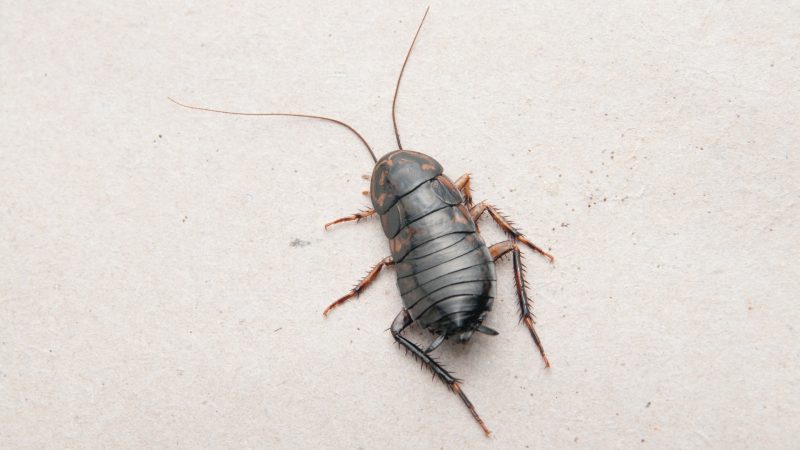
Flying vs. Gliding Cockroaches
Various species of cockroaches are capable of flying with their pair of wings. However, many species, even if they have wings, only glide for short distances. For example, smoky brown cockroaches and male Pennsylvania wood cockroaches are short-distance fliers. In contrast, American cockroaches only glide from higher surfaces due to their large body mass hindering long-distance flights.
Cockroaches generally don’t jump like other insects but glide from elevated surfaces to lower levels. However, the Leaproach, or jumping small cockroach, is an exception, using its legs to jump like some other insects.
Can All Cockroaches Fly?
Not all cockroach species with wings can fly. Many adult winged cockroaches glide instead of flying, while others are entirely wingless and immobile. For instance, Madagascar hissing cockroaches and female Oriental cockroaches lack developed wings. Some species only develop wings later in their life cycle.
Reasons for Cockroach Flight
Cockroaches fly for various reasons, such as self-protection, to find food and shelter, or mating. They may take short flights to escape threats or navigate their surroundings. Some male cockroaches develop wings for short or long-distance travel during mating season. They use their wings to climb up kitchen counters, cabinets, rooftops, trees, and other places.
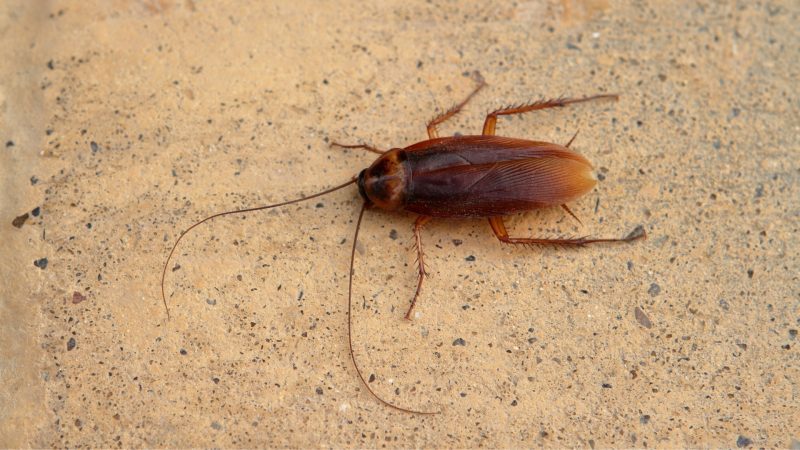
Cockroaches primarily crawl, with American cockroaches reaching speeds of 3.4 miles per hour, or 50 body lengths per second, equivalent to three times a cheetah’s speed. They may fly when environmental conditions become unfavorable, such as temperatures exceeding 85°F, which forces them to expend more energy for survival.
When Did Cockroaches Start Flying?
Cockroaches are wingless at the nymph stage and only start flying upon developing wings as adults. Most flying cockroach species only glide or fly for short distances when threatened. They have two sets of wings: the front pair covers the back and provides protection, while the delicate, clear hind pair is used for flying.
When cockroaches fly, they lift the front pair of wings, exposing the hind pair for flight. This ability to fly or glide helps them evade danger and adapt to various environments, contributing to their remarkable survival skills.
How High Can Cockroaches Fly?
The capability of cockroaches to fly varies depending upon their wings’ strength and the size of their body. Some of them are strong fliers that can fly for over 100 feet.
Most of the flying cockroaches can fly or glide for a short distance as high as an average tree top. However, many of the flying cockroaches prefer crawling instead of flying.
Do German Cockroaches Fly?
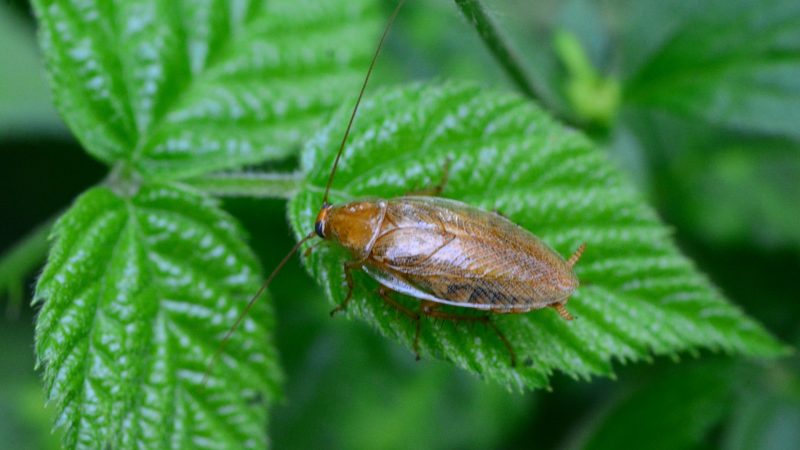
German cockroaches (Blattella germanica) are notorious pests due to their worldwide spread. They can be distinguished from other species by the presence of 2 dark parallel stripes (on the pronotum). These cockroaches live in a humid and warmer climate and harbor multiple pathogens.
The male and females German cockroaches both have a pair of developed wings but their flying muscles are not strong like in other flying cockroaches. Therefore, they rarely fly (during threat) and prefer to crawl and scamper in most of cases.
Can American Cockroaches Fly?
The American cockroach is one of the largest roach pests that invade residential and commercial areas. They have long and narrow, well-developed pairs of wings longer than the body in males, and in females. Also, their wings cover the abdomen.
The American cockroaches are wingless at the nymph stage and cannot fly. The adult American cockroaches can fly for short distances or can glide from high places. Despite their ability to fly, they prefer to run or crawl.
Can Madagascar Hissing Cockroaches Fly?
Madagascar hissing cockroach (Gromphadorhina portentosa) are nocturnal creatures, found only on the island of Madagascar. They do not prefer light and live only in tropical lowland forests and forest floors. This is a large wingless variety of cockroaches, therefore, they cannot fly or glide like flying cockroaches. However, they have special pads on their feet which help them to climb on most surfaces.
Can Oriental Cockroaches Fly?
Oriental cockroaches (Blatta orientalis) thrive in a damp or moist environment, therefore, they are called also water bugs. The male and female oriental cockroaches both have wings but they are underdeveloped and do not help in flying. Male wings cover over 3/4 of its abdomen. They run or crawl in case of threat and in search of food or shelter.
Do Baby Cockroaches Fly?
Baby cockroaches or nymphs are immature roaches they may look like adults but they cannot fly due to the absence of wings. The nymph develops into an adult cockroach after it goes through a series of molting and shedding (may take over a year). The time period of development can vary depending upon the species of cockroach.
What Does a Flying Cockroach Look Like?
Most cockroaches have antennas, head, thorax, abdomen, forelegs, hind legs, and two pairs of wings. The first pair of wings cover the entire body of the cockroach over the back and act as a shield while the other pair of wings helps during flight. Some species of cockroaches do not have wings at all such as Madagascar hissing cockroaches.
Most flying cockroaches have a light brown, reddish brown, dark brown or golden appearance whereas Cuban cockroach has bright leaf green body. Adult cockroaches can grow up to 2 inches long or more. However, their size can vary from species to species.
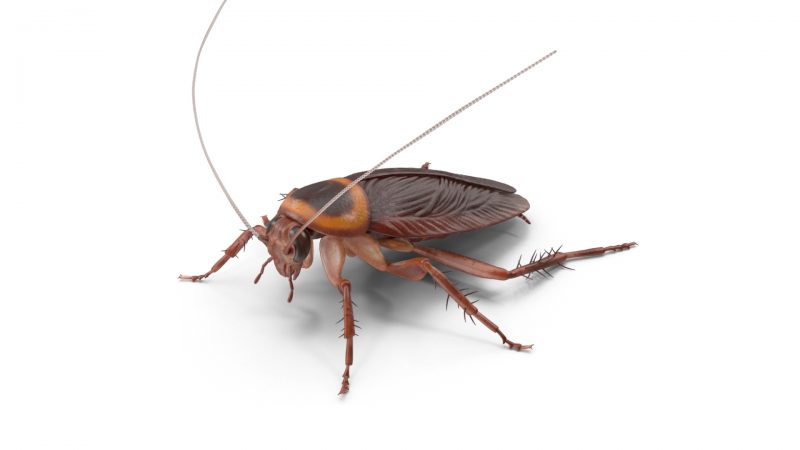
They have two compound eyes, each with 2,000 lenses. With the help of a flexible mouth (that can move at both sides) and a pair of antennae, cockroaches can chew and smell food. They have six sensitive legs that have the potential to re-grow when lost.
The abdomen of cockroaches is equipped with a pair of appendages (named cerci) and contains sensory organs to detect the slightest change in surroundings. Cockroaches respire through spiracles located at the sides of the abdomen. They can travel as fast as 3 miles per hour and can easily hide in small crevices and other narrow spaces.
Flying cockroaches are creepy and can leave a horrifying experience. They can be confused with other flying insects due to the presence of long antennae, oval body, brown wings, and six pairs of legs. For instance, the Locust borer beetle looks similar to the cockroaches during the flight but they can be easily distinguished due to red, yellow, or black markings on their back. The Palo verde beetle also looks similar to the American cockroach during flight.
The interesting fact about cockroaches is that they can live for up to 30 days without their head because they do not need their head for breathing and can survive for a much longer time without food.
Life Cycle
Cockroaches have 3 main stages in their life cycle: egg, nymph, and adult stage. The female cockroach deposits eggs in groups enclosed in a bean-shaped, leathery case known as ootheca. Most species of female cockroaches carry this deposit of eggs on their back for 1 or 2 days whereas German cockroaches carry it for several weeks.
The characteristics of ootheca also help to determine the species of cockroach. The eggs hatch after 30 to 90 days. However, the number of days can vary depending on the surrounding temperature and humidity.
The nymphs or young cockroaches do not have wings and are a few millimeters long. They are white in color when hatched, and become darker after a few hours. Nymph develops into an adult after continuous shedding of their skin.
Types of Flying Cockroaches | Complete List
Flying cockroaches can be distinguished from other cockroaches by the presence of their well-developed wings and the capability to fly or glide. In the following sections, we will talk more about the specific types of flying cockroaches.
The American Cockroaches
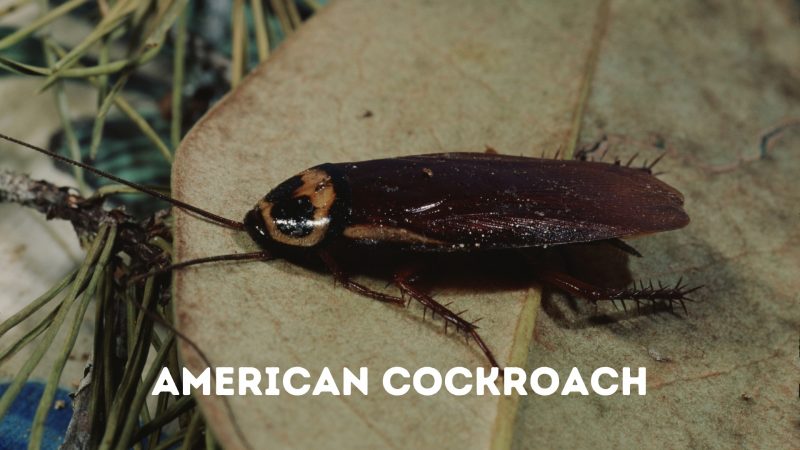
The American cockroaches (Periplaneta americana) are widely distributed species of cockroaches, just after German cockroaches. They are about 35 to 40 mm long and have a shiny reddish-brown body. Female roaches lay eggs in capsules that are hatched in 30 to 60 days.
Nymph develops into an adult in around 6 to 12 months or as long as 15 months. With the help of their well-developed wings, they can glide or fly at short distances but prefer to run. They are found in dark and humid areas such as kitchens, basements, bathrooms, pipelines, roof voids, etc.
Asian Cockroaches
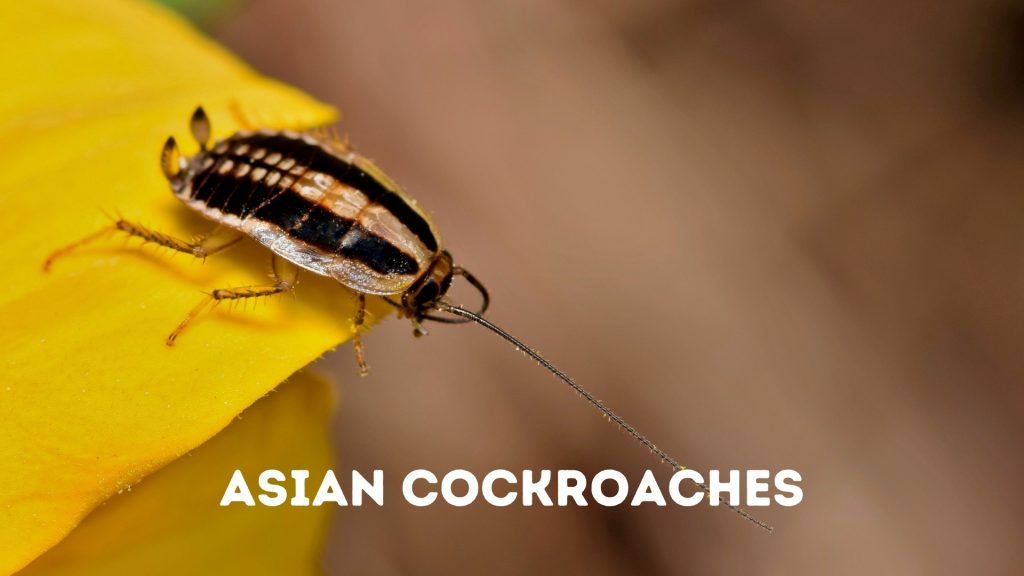
Asian cockroaches (Blattella asahinai) look similar to German cockroaches. They are light brown in color and have two parallel lines at the pronotum. The adult Asian cockroaches range between 13 to 16 mm in length. The female lays eggs in 4 capsules and the nymph reaches adulthood in about 67 days. They prefer to live outside, and are attracted to your house due to the light. They are active at dusk and are capable of flying long distances.
Smoky Brown Cockroaches
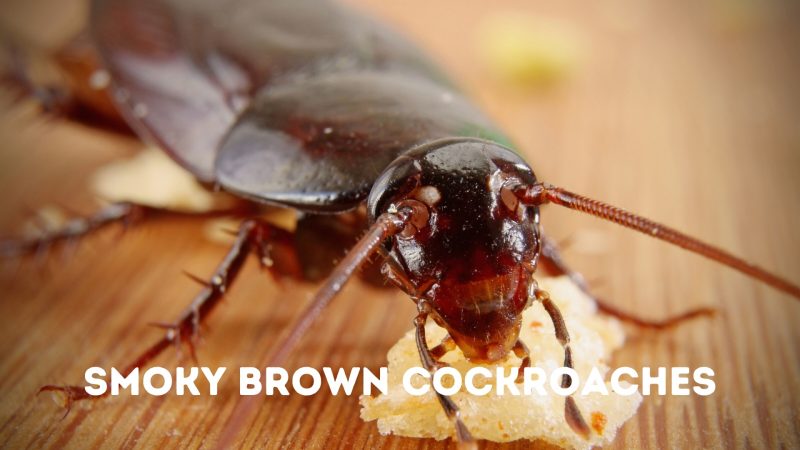
Smoky brown cockroaches (Periplaneta fuliginosa) are shiny brown roaches, measuring between 3 to 35 mm long. In males, wings are longer than their bodies, and they are strong fliers. The nymph develops into an adult in about 6 to 12 months. They are nocturnal insects and make shelters under floors and bark.
Brown-Banded Cockroaches
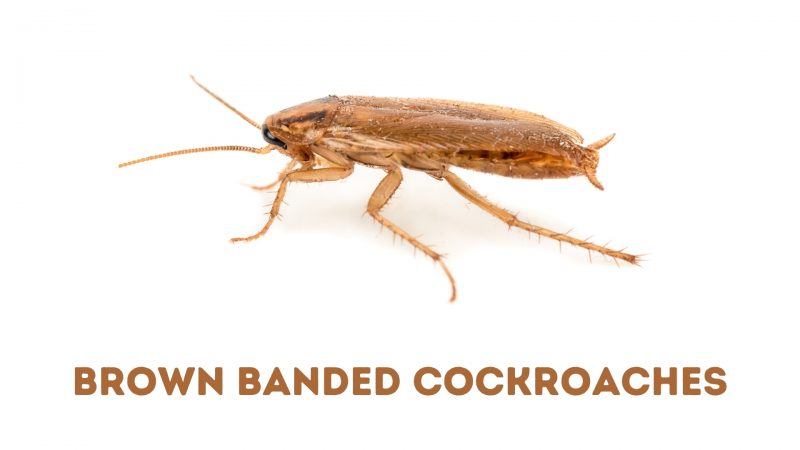
Brown-banded cockroaches (Supella longipalpa) prefer to live in a warm and humid environment. They are active during the night and can fly into your ceilings, attics, or in other narrow spaces. They are one of the smallest cockroaches which range between 10 to 15 mm.
The brown-banded adults have yellow-brown lines at the abdomen. Each ootheca contains 14 to 18 eggs, the egg develops into an adult in 90 to 276 days depending upon the surrounding temperature.
Cuban Cockroaches
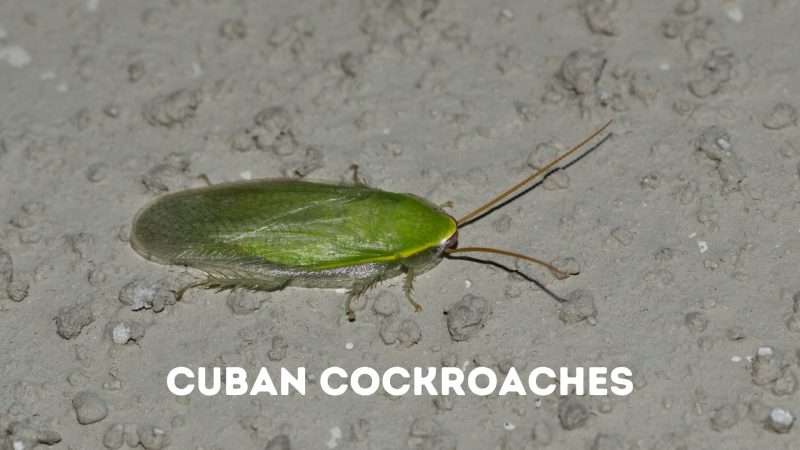
Cuban cockroaches (Panchlora nivea) have a green body and they can grow up to 2 inches long. They do not commonly invade your house. These cockroaches are short-distance fliers. They are easily attracted to light or illuminating lamps. The Cuban cockroaches have large ootheca that can carry up to 100 eggs. The eggs develop into nymphs in about 2 months and reach adulthood in 100 days.
Australian Cockroaches
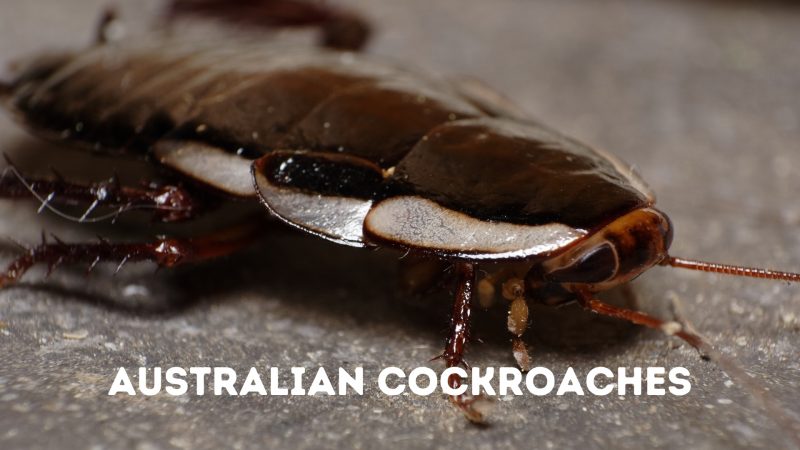
Australian cockroaches (Periplaneta australasiae) are strong fliers and look similar to American cockroaches. They are light brown in color, measuring between 30 to 38 mm long. A female lays up to 24 eggs in an ootheca that hatch in a day and the nymph develops into an adult in 6 to 12 months. They enter your house from debris or garden waste at night.
Pennsylvania Woods Cockroaches
Pennsylvania wood cockroaches (Parcoblatta pensylvanica) are active during the daytime, unlike other species of cockroaches. Male wood cockroaches are up to an inch long whereas females are a little smaller in comparison to male cockroaches. They have a dark brown bodies with light wings.
In male roaches, wings are longer which improves their ability to fly. However, in females, wings are smaller and functionless. They feed on decaying organic matter and mostly are found in woodpiles and roof shingles. Females lay eggs in ootheca which are hatched in a month and the nymph develops into an adult in a time period of 10 months to 2 years.
Megaloblatta
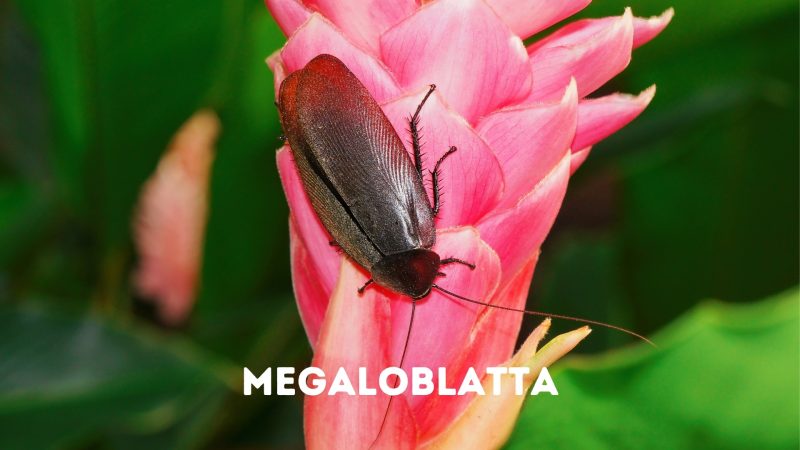
Megaloblatta (Megaloblatta longipennis) is the largest flying cockroach. They have a dark brown bodies and can grow up to 3.8 inches long. Their wingspan measures up to 7.9 inches which makes them a capable fliers. They are commonly found in Central and South America.
What Attracts Flying Cockroaches?
Flying cockroaches are mostly attracted to food, water, and warmth. Cockroaches mostly live outside, and some of them can enter your house in search of moisture or warmth. If you have leftovers, spilled food, or crumbs in your kitchen, these things can also attract cockroaches at any time into your house.
Why Do Cockroaches Fly Towards You?
Cockroaches try to escape as fast as they can when they notice any change in their surroundings. They usually do not fly toward humans, and if they do then it may be due to their poor sense of direction or because they are frightened. In most cases, they are attracted to the light source behind them.
Do Cockroaches Fly Towards Light?
Some species of cockroaches are attracted to light. Flying cockroaches come out at night during mating season and are particularly attracted to light bulbs or other illuminating lamps. Some of the flying cockroach species that are attracted to light are Asian cockroaches, Australian cockroaches, smoky brown cockroaches, Pennsylvania wood cockroaches, etc.
Where Do Flying Cockroaches Live?
Flying cockroaches can live and flourish in a variety of habitats. They have tropical origins but can thrive in different temperature zones and are found all over the world due to their impressive adaptive abilities. The flying cockroaches prefer to live outside but they can fly or glide into your house for adequate warmth, moisture, food, or light.
They live in groups and most of the species are active during nighttime. Cockroaches are the most common indoor pests and they prefer to live in humid surroundings such as bathrooms, kitchens, cupboards, steam tunnels, basements, animal houses, drains, and other moist places.
In outdoor settings, cockroaches live in decaying matter, underwood shaving, on treetops, under hollow barks, in wall voids, in the drain, in pipelines, or wherever they find a favorable environment.
Are Flying Cockroaches Dangerous?
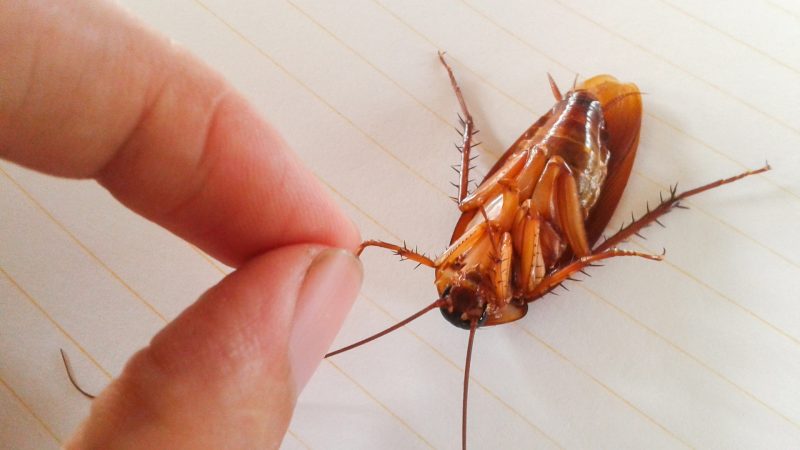
Flying cockroaches live in drains, decaying material, filth, and feed on almost everything including garbage and waste material. Due to these facts, they can carry a variety of pathogens in your house or on food items which can lead to different diseases such as Typhoid fever, Dysentery, cholera, food poisoning, Leproses, etc. They can also contaminate your utensils and can spoil your food.
Allergens from cockroach wastes can trigger allergies and cause asthma. The flying cockroaches are mostly active during the night, that’s why their infestation can go unnoticed at earlier stages. The larger infestation of cockroaches can cause havoc and frustration.
Do Flying Cockroaches Bite?
Flying cockroaches usually do not bite, but it is not completely impossible. Some reports have been found of cockroaches biting at fingernails, calloused skin, or at eyelashes. The flying cockroaches could start biting people in houses where the infestation has gotten to the point that the cockroaches do not have enough food sources.
Generally, they are not considered a potential threat to humans. However, you may see a red bump and swelling at the bitten area or it may itch like other insect bites. Flying cockroaches do not contain venom but they can carry pathogens that can lead to infection.
Summary
Cockroaches are found all over the world and have an impressive capability to thrive in different temperature zones or harsh environmental conditions. There are almost 4600 identified species of cockroaches, many of them have wings but only a few can fly.
The most commonly known flying cockroaches are Asian cockroaches, Australian cockroaches, Pennsylvania woods cockroaches, American cockroaches, smoky brown cockroaches, brown-banded cockroaches, Megaloblatta, and Cuban cockroaches.
Most flying cockroaches are attracted to light, moisture, and food. They have the potential to carry pathogens in your house that can cause serious diseases.
List of Sources
Drees, B. M. (2010). Cockroaches in the Texas Landscape. Texas A&M: AgriLife Extension.
Malinoski, M. K. (2020). Cockroaches. Home and Garden Information Center, University of Maryland Extension.
Sutherland, A. M., Choe, D-H., and Rust, M. K. (2019). Cockroaches. UC Pest Notes: Cockroaches. University of California Agricultural and Natural Resources.
Richman, D. L. (2002). Asian Cockroach, Blattella asahinai Mizukubo (Insecta: Blattodea: Blattellidae). EDIS, 2002(8).
- Bed Bug Surge 2025: How to Detect, Prevent, and Safely Eliminate Infestations in Top U.S. Cities - June 18, 2025
- Asian Needle Ants Invade US Homes: 2025 Guide to Identification, Risks, and Effective Control - June 11, 2025
- New World Screwworm Alert: How US Livestock Owners Can Prevent Outbreaks and Protect Herds [Summer 2025 Update] - June 8, 2025
